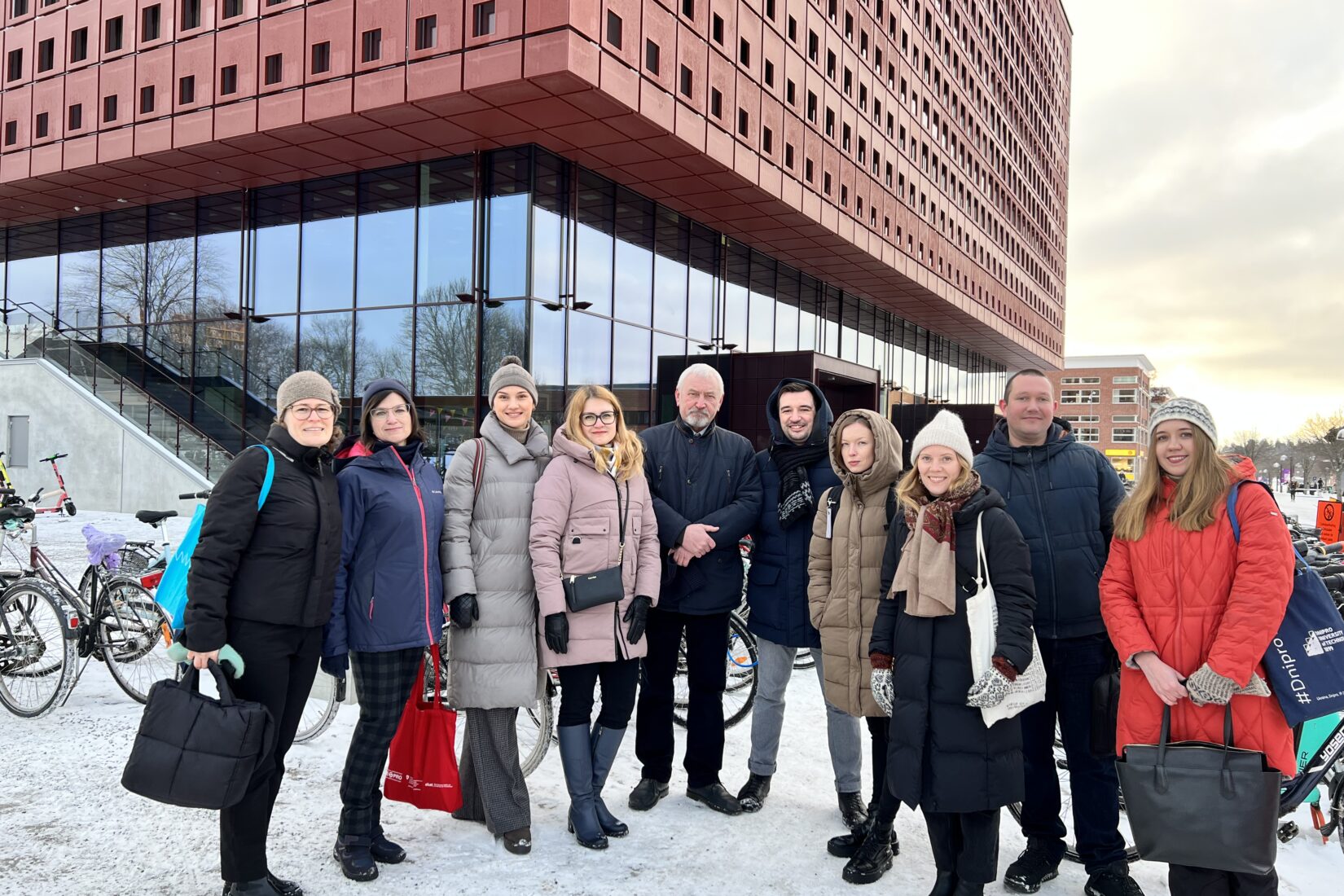Mariana S Gustafsson is project manager for EMDIAC at Linköping University. She is full of enthusiasm and willingness to share when she talks about the project. Although it is a project that has generated many extra hours and headaches over budget issues, it has also been very meaningful:
– EMDIAC is about knowledge and meetings that lead to action. Knowledge is always key, and not only knowledge of the research situation, but knowledge of another university’s teaching and research methods for digitisation. We have really enriched each other’s courses.
– There was a moment of panic when the war started, will people want to participate? At the same time, the war became a trigger to make our activities even more meaningful, not least for the participants from Ukraine. Our meetings aimed at concrete joint initiatives for the future, which meant a lot to both them and us. We felt that we were together and could discuss how to strengthen and improve public administration in a democratic spirit.
Exchange of methods and tools
An important part of EMDIAC has been to share methods and tools for the digitisation of teaching and research. For Dnipro University in Ukraine, digital tools are essential as they teach entirely online and many students continue to study from their wartime outposts.
Estonia, in turn, is very advanced digitally and was able to show, among other things, a tool that matches researchers’ profiles with funding and calls for proposals and that also offers probability calculations for a positive outcome in the competition for research funds.
– We have compared digital platforms for teaching, which has given us knowledge about new functions and ways of working. Within the project, we have also contributed to improve each other’s courses. We have made study visits and workshops at the universities’ pedagogical resource centres about tools and methods. It has been a very valuable exchange, says Mariana S Gustafsson.
Digital risks for democracy
A partial aim of EMDIAC is to look at digital risks for democracy. Knowledge and understanding of the threats to democracy have been important in developing institutions and policies and acting in accordance with them. Among other things, a Ukrainian partner held a course on disinformation before and during the war in Ukraine.
– The whole EMDIAC project has such relevance. We wrote the application before the war broke out. When the war came, it became urgent to study disinformation campaigns, which are another dimension of a war. We have worked to understand what is happening in Ukraine, within the higher education during war and crisis, and to help them strengthen their democracy. But we have also looked at how Estonia is challenged by disinformation campaigns from Russia, which also has implications for us in Sweden. In this way, we can see that the project’s activities strengthen and protect democracy in the long run, says Mariana S Gustafsson.
Ideas outside of the project plan
The meeting between the researchers has also had ripple effects and generated ideas outside the project plan. Among other things, Linköping University supported the Dnipro University with a quality evaluation of their master’s programme in digitisation. Dnipro University then took the initiative for Linköping University to become co-editor of their research journal:
– A colleague suggested that we write a conference paper. It led to a paper co-authored by two Swedish and six Ukrainian researchers on how the public administration cooperates with civil society to deliver welfare services during the war in Ukraine. It was accepted to a global conference on digitisation and welfare research.
– The research and writing of the article were not planned activities but became effects of the project. We have also applied for research funding, been granted Erasmus+ International Credit Mobility funding, and a small spin-off project received funding from The Estonian Centre for International Development. Another effect of EMDIAC is that we are discussing entering into a formal cooperation agreement between the universities.
How did it all begin?
It all started when two researchers met at a summer school on digitisation in public administration (SeGRID), run by Linköping University, with funding from the Swedish Institute. The contact between these SI alumni led to an SI-funded project with civil servants and politicians in the state administration in Ukraine, Link4Change, where researchers from the University of Tartu in Estonia were also invited.
– Knowledge, interests, and relationships that lead to action, that’s EMDIAC. We have these energetic persons who make sure something happens, key persons who have drawn others into our network and taken proactive action and made EMDIAC a platform, a beehive around which a lot of other ideas are buzzing, concludes Mariana S Gustafsson.
Facts:
Within the SI Baltic Sea Neighbourhood Programme, SI finances projects in which Swedish organisations work on cross-border challenges and opportunities together with organisations from the EU countries around the Baltic Sea and countries in the EU’s Eastern Partnership. The programme offers two different types of grants to apply for at different occasions: seed funding and funding for cooperation projects. A call for applications regarding cooperation projects opens on 15 November 2023 and closes on 15 February 2024. Read more on the programme’s homepage.
